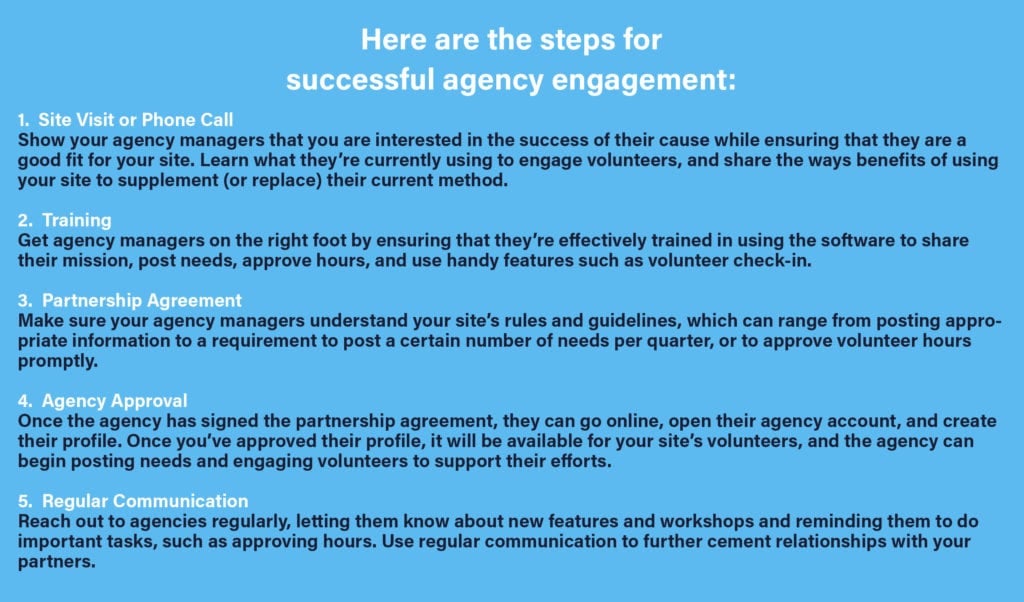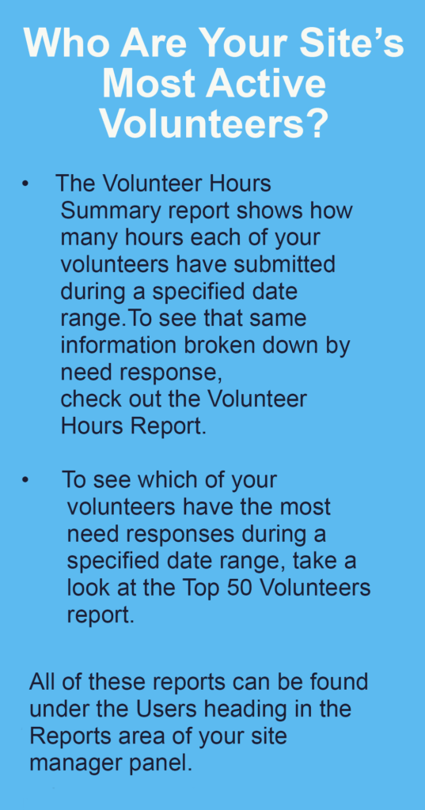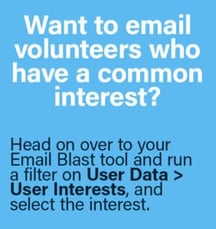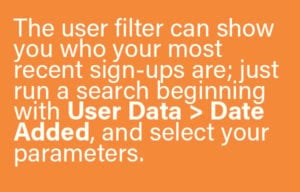United Way for Southeastern Michigan serves a large region covering three counties and the city of Detroit. In 2016, it engaged 3,157 volunteers to serve hundreds of thousands within its service area through its focus areas: Education, Economic Prosperity and Health. Its Meet Up and Eat Up program, for example, serves millions of healthy meals across the state each summer to fill the gap when school is out, and its College and Career Pathways efforts in historically low-performing schools saw graduation rates reach an average of 80% in its network in 2016. Much of organization’s success is due to robust partnerships with hundreds of corporations and nonprofit organizations across the state.
The Opportunity
Although United Way was providing volunteer opportunities on its website, they were limited. And, the organization was only able to gain traction recruiting from its corporate partners. Engaging the public proved challenging: Volunteers weren’t signing up for the projects promoted on the United Way website — and those who did sign up often didn’t show up.
United Way saw an opportunity and a need within the community to help its nonprofit partners fill volunteer slots and help community members find meaningful opportunities to give back.
Another challenge involved the organization’s own staff. Several years before, United Way developed volunteer projects for employees, with the goal of supporting their work while promoting a culture of volunteerism within the organization. After being given only one volunteer project to sign up for each year, staff wanted more projects to choose from, along with the ability to select the ones they were most passionate about.
Overall, United Way needed to offer more volunteer opportunities that appealed to a greater number of volunteers and met a wider range of needs in Southeastern Michigan. United Way also needed to expand opportunities with partners it hadn’t worked with before. In order to do it, they needed a tool that could collect, publicize, and promote the many volunteer opportunities that are out there—and a way to make it easier than ever for volunteers to engage in meaningful work that matched their interests and supported the causes they cared about.
Get Connected as a Solution
We spoke with Kristen Lewis, United Way’s Volunteer Engagement Manager, about the organization’s implementation and use of the Get Connected platform. United Way’s Volunteer Engagement (VE) team first began advocating for volunteer software in response to corporate partners’ requests for more volunteer opportunities. “We knew we did not have enough opportunities, along with a variety of opportunities, to meet demand,” Lewis said, adding that the right volunteer software could expand volunteer efforts across the board, serving as a valuable resource for partner agencies and other nonprofits, as well as for community members who needed a place to find a meaningful opportunity.
The VE team specifically wanted user-friendly software that was appealing for a wide audience, such as site managers, agency managers, corporate partners and community volunteers. United Way also needed software that could provide data tracking and reporting, and could integrate with its CRM system. They decided to go with Get Connected, launching in March 2017 with an initial goal of engaging 25 partner agencies.
Begin by Reaching Out
As volunteer managers, Lewis and her colleagues knew that learning to use the software was only the first step in a successful implementation. Equally important, the organization needed to onboard its first 25 partner agencies.
“We wanted 25 agencies when we launched to the public,” said Lewis, “So our team said, ‘let’s work together, let’s look at the partners we’ve worked at in the past.’ And we created a target list.” Of that list, 23 agencies readily agreed to register on the platform. For those who weren’t interested, the VE team adjusted its strategy. For example, “For one agency that already had an effective volunteer recruitment system,” the team encouraged them to use Get Connected as “a supplemental recruitment source”— one that comes with the benefit of the United Way brand.
And that’s a big benefit. “United Way is one of the most visible nonprofits in the tri-county area,” explained Lewis. “Nonprofits that use Get Connected can get additional visibility, tapping into our network of 12,000 volunteers that we already have.” In addition, United Way runs spotlights of nonprofit partners in its monthly volunteer newsletter, featuring posted opportunities on its website and promoting active agencies on its blog and social media channels. Another plus of being on the Get Connected platform? “Corporate partners reach out to us every day, so when we’re looking to find opportunities for them, we look at the nonprofits who are already on our platform to fulfill the request.”
Lewis said pitching Get Connected to that first batch of agencies, and more recently to other nonprofits, wasn’t hard. In their role, Lewis and her colleagues work diligently to provide opportunities that align with community needs. “We always ask if the work is benefiting the community,” she said. Knowing that partner agencies had the same questions, the team found the Get Connected platform compatible. United Way has more than doubled its active agencies on the site since launching and seeks to reach out to nonprofits who aren’t current partners.
Building Connections
It’s one thing to entice a nonprofit partner to join the site, and quite another to get them to reap the benefits over time. No matter how helpful and beneficial a tool is, said Lewis, it’s only one component. What’s been most important, she said, has been focusing on the relationship with their agency partners.
Part of a team of seven, Lewis and a co-worker share the responsibility for agency relationships. “We each have a portfolio of agencies,” she explained, “and they each work to build personal relationships and practice relationship management.” For agencies that join the site, United Way has established a three-step process to ensure that agency managers have a successful start. Following an in-person site visit or phone call, new agency managers watch a video of a recorded custom training that Galaxy Digital conducted for United Way. Next, the agency sends United Way a partnership agreement. With those steps completed, explained Lewis, they’re free to create their profile. “We’ll approve it, and then they can post their volunteer opportunities.”
With an eye on increasing the number of participating agencies, Lewis is currently developing a management plan for all agencies on the site. The plan will feature regular communication, information about available resources in the community, reminders to verify submitted volunteer hours, and workshops in volunteer management training. With more agencies using Get Connected to offer a greater variety of opportunities to a diverse population of volunteers, Lewis and her team plan to continue developing and cementing relationships with their current and future partners to make United Way’s platform the first and best place for volunteers to find opportunities to do good work in Southeastern Michigan.

Reaching Individual Volunteers
Historically, United Way has had great success with corporate volunteering. And Southeastern Michigan has a wealth of other groups, including churches, who seek to make an impact in the community. “United Way has a top-notch team managing corporate volunteerism,” Lewis said.
“The hard part is figuring out how to reach individuals in the community in terms of volunteerism.” United Way’s challenge is twofold: community volunteers are less visible and harder to recruit, and those they’ve recruited in the past haven’t always come through. “What we’ve seen is people sign up for a project, but then they don’t actually attend. We’ve had projects where we had 30 spots and everybody signed up, but no one came.” Of course, she said, there were other factors; attendance tended to be higher for weekend and holiday projects, and lower at other times of the year. But overall, it was still “very low,” particularly compared to their corporate volunteerism, which was regularly at 100% attendance, or close to it.
Lewis said part of the problem was the way opportunities were historically offered: “Before, we were posting volunteer opportunities on our webpage, and it was the same seven opportunities every month. People may have thought ‘I either don’t want to do this, or I’ve already done this, and I want to do something else.’ And so they would look elsewhere.”
With Get Connected, things have started to change. With more needs from more agencies, and with United Way posting more of its own needs, people are seeing that there’s always something new, and there’s always a wide variety.
“Whether it’s due to the site’s ease of use, the reminder emails, or the addition of new opportunities that match volunteers’ passions, individual volunteers are showing up in greater numbers,” she said.
Recognizing Good Work
 Lewis and her team said it’s important to recognize those in the community who are doing good work—whether as agency partners, corporations or as individuals. With the stats they access in Get Connected reporting, they can see who is posting needs, what needs are getting the most responses, who is volunteering, and for how many hours. Armed with that data, they can give proper credit to their volunteers in their newsletter and on social media.
Lewis and her team said it’s important to recognize those in the community who are doing good work—whether as agency partners, corporations or as individuals. With the stats they access in Get Connected reporting, they can see who is posting needs, what needs are getting the most responses, who is volunteering, and for how many hours. Armed with that data, they can give proper credit to their volunteers in their newsletter and on social media.
“Right now, our biggest piece of volunteer recognition is our monthly newsletter spotlights,” said Lewis. “Prior to launching Get Connected, we were only able to recognize corporate partners, but now because we’ve been able to reach a broader audience, we can lift up individual volunteers.”
Recently, Lewis said, they spotlighted an individual who had never volunteered before who has logged close to 300 volunteer hours. “By way of highlighting her, we were also able to highlight our partner nonprofit agency.” By spotlighting volunteers on all levels, and through various media (the newsletter, blog, website, social media), United Way can draw attention to the valuable work to both their volunteers and their partner nonprofits.
United Way is also planning for next year’s National Volunteer Week with an event to thank volunteers through social media.
 The VE team also has plans to begin reaching out to volunteers based on their interests. They’ve already learned, by way of a volunteer survey, that Get Connected users are searching for needs by interest. For example, we have an audit volunteer opportunity for CPAs, so we’re getting ready to pull everybody who’s interested in finance, and then send that opportunity directly out to them. And we’ll tell them, ‘We know you’re interested in this. Here’s an opportunity that we think would be a good match.’”
The VE team also has plans to begin reaching out to volunteers based on their interests. They’ve already learned, by way of a volunteer survey, that Get Connected users are searching for needs by interest. For example, we have an audit volunteer opportunity for CPAs, so we’re getting ready to pull everybody who’s interested in finance, and then send that opportunity directly out to them. And we’ll tell them, ‘We know you’re interested in this. Here’s an opportunity that we think would be a good match.’”
 The VE team also sends out volunteer surveys to help ensure that Get Connected users are finding what they need and getting the results they want. “One of the surveys we’re getting ready to implement is a usability survey,” she said. “It’s outside of any project, and it specifically asks, ‘How is the system working for you?’ ” Twice a month, they’ll pull the last two weeks of new users to check in with them, and make sure they are having a satisfactory experience.
The VE team also sends out volunteer surveys to help ensure that Get Connected users are finding what they need and getting the results they want. “One of the surveys we’re getting ready to implement is a usability survey,” she said. “It’s outside of any project, and it specifically asks, ‘How is the system working for you?’ ” Twice a month, they’ll pull the last two weeks of new users to check in with them, and make sure they are having a satisfactory experience.
United Way will also send a yearly check-in each spring to gauge users’ site experience.
Get Connected Helps with Corporate Partnerships, Too
The platform has also offered some benefits to United Way’s corporate partners as well by offering them private events that can be hidden from public view on Get Connected.
One surprising phenomenon they’ve noticed is that corporate volunteers are becoming community volunteers. “As we continue to engage our corporate partners, we’re seeing an uptick of individual volunteers from these corporate groups that are coming back and signing up for opportunities on their own time, and sometimes with their families.”
She sees this primarily through surveys sent to their corporate volunteers. As she explained, “At the end of the anonymous survey, volunteers can leave their contact information if they’re interested in learning more.” And most of those volunteers are people from companies that they’ve engaged with before.
Getting the Team on Board: Developing Advocates within United Way
On a smaller scale, Get Connected has been a boon for internal development at the organization. Lewis manages staff volunteer opportunities, and prior to adopting Get Connected, the VE team observed that “not every team saw how volunteerism was integrated into their work, and how it was beneficial.” They have long been in the process of “normalizing” volunteerism with the United Way staff, taking the approach of, “Let’s figure out where volunteerism can help the work that you’re doing.”
With Get Connected, the VE team could more effectively harness volunteer opportunities that were meaningful to staff. “The platform has really been the tool for us to truly educate our staff about what we do and how we can be an asset,” said Lewis. “We did a lot of work pre-launch to educate everyone in the organization. We offered team training for every department to show them how the portal works from the user’s perspective and how each department could benefit.”
Staff aren’t only users, they’re advocates. Since the launch, Lewis said staff have regularly told her team about new partners they’ve met in the community who would be great to add, or they’re sharing it with their friends and family.
Looking to the Future
To successfully implement Get Connected as a community tool, Lewis did more than just launch the software; she and her staff worked to educate the United Way team, cater to corporate partnership needs, build relationships with agencies, and recruit volunteers from the public. For the VE team, Get Connected was never just a single solution, but rather a tool to be integrated into a suite of efforts to build a strong volunteer base to benefit the region.
“Get Connected is a great tool, but it’s only as good as we make it. It wouldn’t have worked as well if we didn’t focus on the relationship with our agencies, and that is vital.”
The VE team has big plans for using Get Connected to help build community volunteerism in Southeastern Michigan. “Ultimately, United Way plans to continue to be seen as the place to go for volunteer opportunities,” she said. “With the implementation of Get Connected, we have seen an uptick in the number of registrations we receive and the number of community volunteers that attend our projects, so it has improved this area of our work, and I think that with our continued expansion of agency partnerships and volunteer opportunities, it will continue to improve.”





